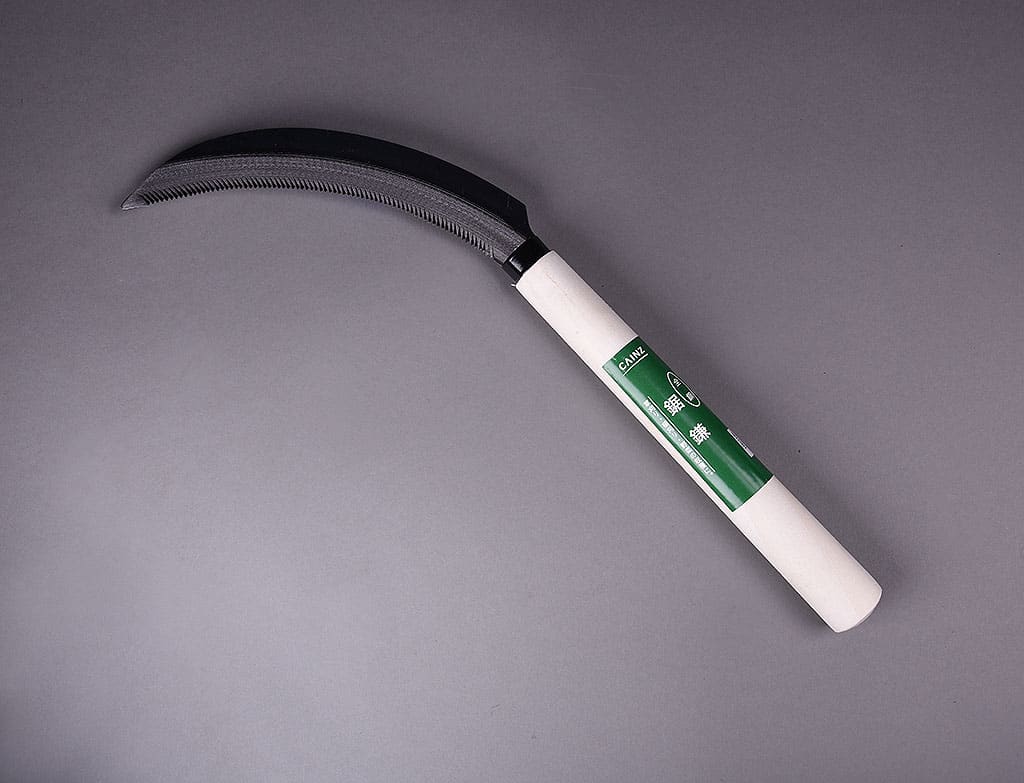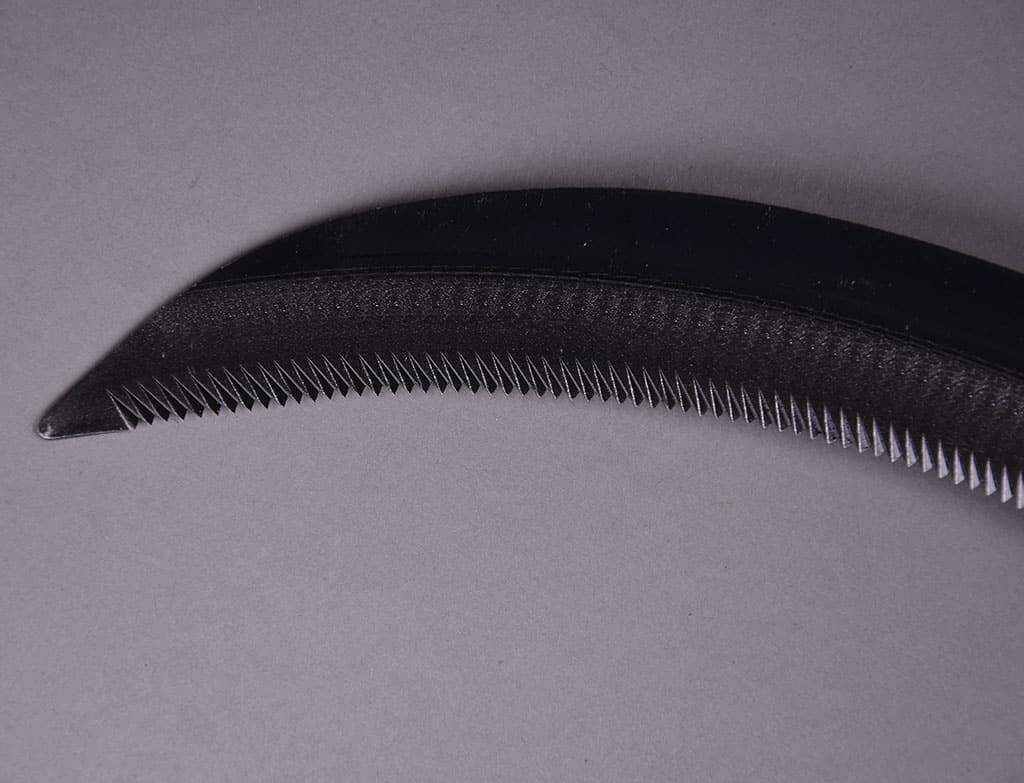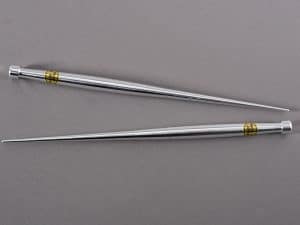Descripción
Yo ya no se trasplantar sin esta herramienta. Es imprescindible para sacar el cepellón de las macetas que tienen labios hacia el interior y también para las panzudas.
Cómo se usa: esta sierra corta al tirar, por lo que se clava en el cepellón siguiendo el borde interior del tiesto y se tira. al tirar es cuando corta las raíces. Puede ser que al principio no sea posible clavarla de modo que la vamos pasando por todo el perímetro interior del tiesto para ir sacando poco a poco tierra y raíces.
TRUCO: Atención a la inclinación lateral de la cuchilla, la punta debe mirar ligeramente hacia el cepellón y la parte superior ligeramente hacia el exterior del tiesto. Recuerda que lo que buscamos es el desmoldeo, si al cortar hacemos un cepellón más ancho en la parte inferior que en la boca de la maceta, el cepellón no saldrá nunca.
OTRO USO: En bonsáis consolidados y formados por multitud de raíces finas, como por ejemplo los de los arces, gano tiempo cortando filetes del cepellón de todas sus 6 caras. Cuando ya tengo el cepellón del tamaño que considero es cuando empiezo a utilizar el palillo de madera para deshacer el cepellón.
¡No hay herramienta que te facilite más un trasplante!
Extra-long destemming saw
I don’t know how to transplant without this tool. It is essential for pulling the root ball out of pots that have lips on the inside and also for pots that are pot-bellied.
How to use it: this saw cuts as you pull, so you stick it into the root ball along the inside edge of the pot and pull it out. It may not be possible to drive it in at first, so we run it around the inside perimeter of the pot to gradually remove soil and roots.
TIP: Pay attention to the lateral inclination of the blade, the tip should face slightly towards the root ball and the upper part slightly towards the outside of the pot. Remember that what we are looking for is the demoulding, if when cutting we make the root ball wider at the bottom than at the mouth of the pot, the root ball will never come out.
OTHER USE: In consolidated bonsais formed by a multitude of fine roots, as for example those of maples, I save time by cutting fillets of the root ball from all 6 sides. When I have the root ball of the size I consider is when I start to use the wooden stick to undo the root ball.
There is no tool that makes transplanting easier!







